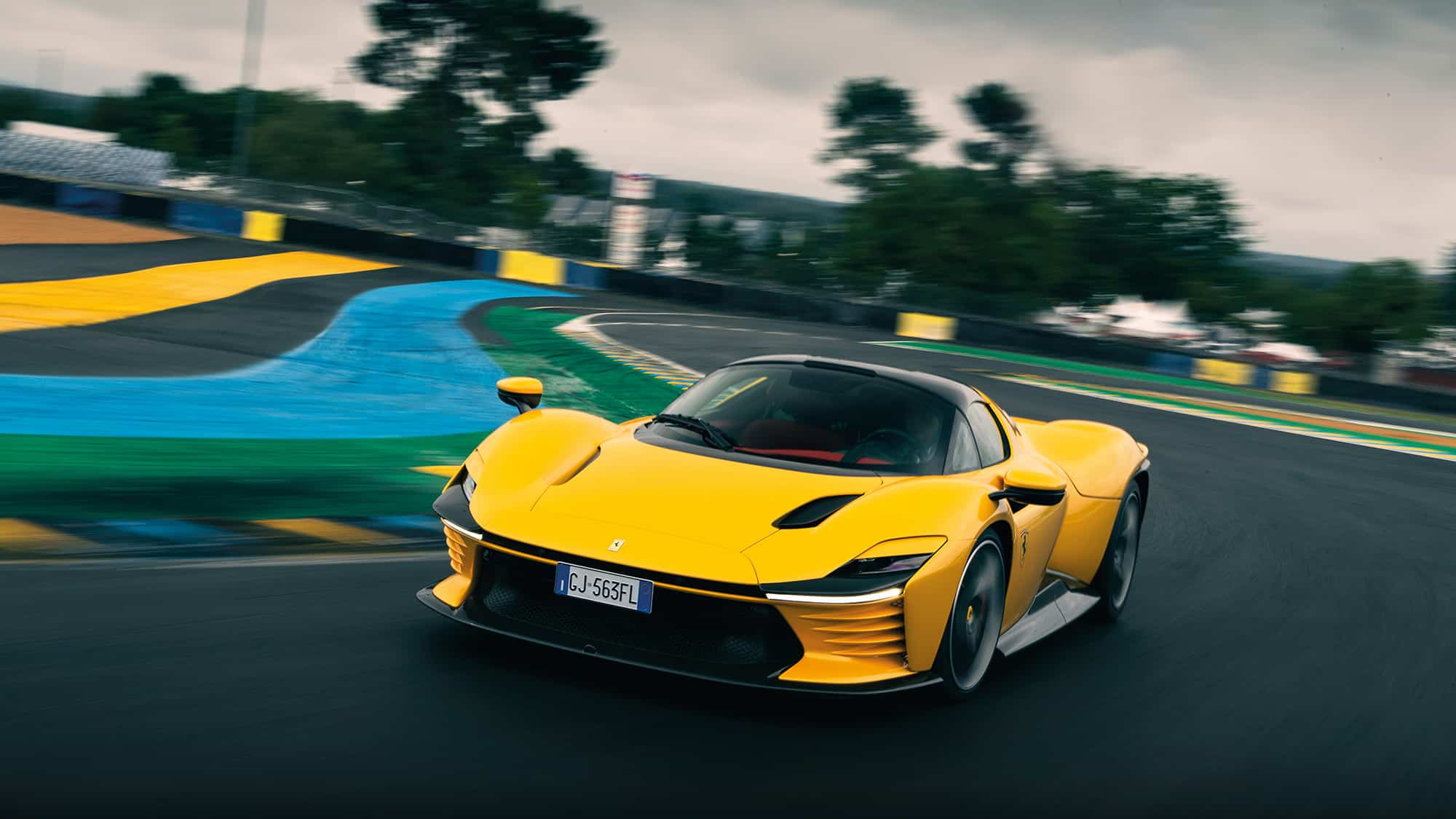Driving the spectacular Ferrari Daytona SP3
The third instalment of Maranello’s Icona series comes with a windscreen, wipers and, naturally, an eye-watering price. Andrew Frankel takes the wheel of the sold-out Daytona SP3 at Le Mans and finds himself the centre of attention
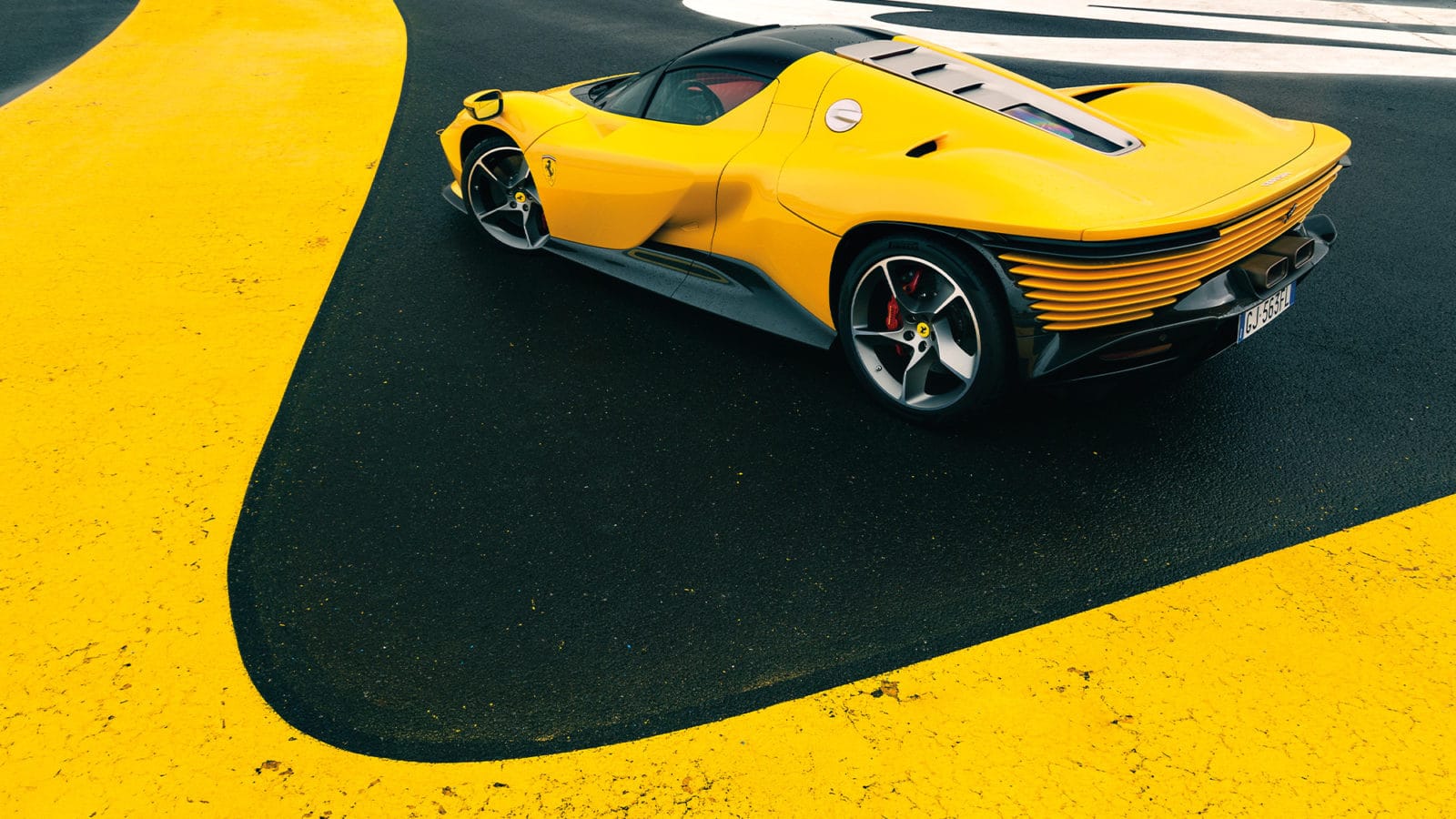
Luc Lacey
The front wings curve and curl ahead of you, the monstrous V12 bellows and barks behind you. The revs keep rising: 7000, 8000, 9000rpm. This is getting ridiculous. But it’s hard to back off, because there’s just a little bit of me that now thinks he’s Chris Amon and that this isn’t a road in France, but a track in America. Florida to be more precise, Daytona to be absolutely specific. And I’m winning the Scuderia’s first 24-hour race in the western hemisphere. Because that’s what he and Lorenzo Bandini did in 1967 and it is that event this car I’m driving exists to honour. It hasn’t won another since. But back off I do for I am neither Chris nor Lorenzo and, much as I’d like it to be otherwise, this is not a 1960s prototype sports racing car.
But it is the first time Ferrari has called a car ‘Daytona’, the 1967 front-engined 365 GTB/4 merely acquiring that name informally after that famous win. In full this is the Ferrari Daytona SP3, the third and most recent in Ferrari’s Icona series of spectacularly styled and even more spectacularly priced limited series supercars. The first two, the SP1 and SP2, appeared in 2018 and were intended to evoke memories of Barchetta-bodied Ferrari road-racing roadsters of the 1950s. No need to be told which car inspired the SP3: those voluptuous curves are pure P4. The slatted back looks P5 to me or, to be strictly accurate, like Pininfarina’s Project 222 study from which the P5 would have been derived had the FIA in 1968 not slapped a 3-litre limit on Group 6 prototype racing cars. It is gorgeous.
It’s fairly special under that gleaming paint too: a carbon body fused to a carbon tub cradling the most powerful V12 engine Ferrari has ever made for either a road or racing car. It has 829bhp. Just think about that for a moment. Other contenders? Well the LaFerrari had 950bhp, but only once its V12 had been externally boosted from 789bhp by an electric motor. The FXX-K Evo did have an 848bhp V12 but can be used neither on road nor for racing. But surely one of Ferrari’s V12 F1 cars would have had more power than this? Surely not. In Formula 1, its last 3.5-litre car was the 412T in 1994 and according to Ferrari it made 750bhp. It was followed by a less-powerful 3-litre V12 before the Scuderia adopted a V10 configuration. From the sports racing world, the 712 Can-Am car of 1971 also never got past 750bhp. So yes, Ferrari’s most powerful V12 for either road or race use, ever.
What Ferrari doesn’t mention in all its accompanying blurb, but will happily concede when asked, is that the SP3 is a direct descendant of the LaFerrari. It wouldn’t be accurate to say it’s simply been rebodied because, first, the SP3 lacks the earlier car’s hybrid drive and, second, it runs a different, later version of Ferrari’s famed F140 engine, now in its 20th year and displacing 6.5 litres here, rather than 6.3 litres as seen in the LaFerrari. But you only have to climb into the cabin (not easy if you’re tall, but a hell of a lot easier than getting out) and note that it too has a fixed seat and sliding pedals to see just how close the relationship is. No other Ferraris do this. Their identical wheelbases are a bit of a giveaway too. Not that there’s much wrong with that: when I drove the LaFerrari in 2014 it briefly replaced the F40 as the greatest road car I had driven from any manufacturer. It was only after careful reflection that the F40 returned to the top of the tree.
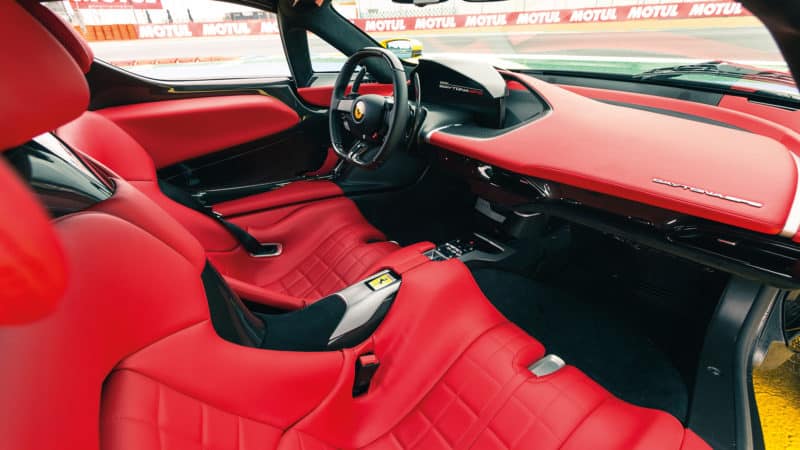
Upholstered seats are directly attached to the chassis to give a lower driving position, while the dashboard is purposefully minimalist
Luc Lacey
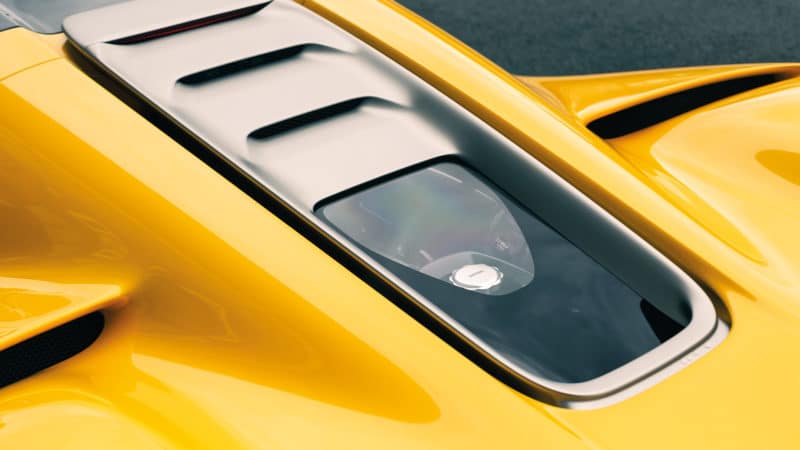
The engine cover has a central ‘backbone’
Luc Lacey
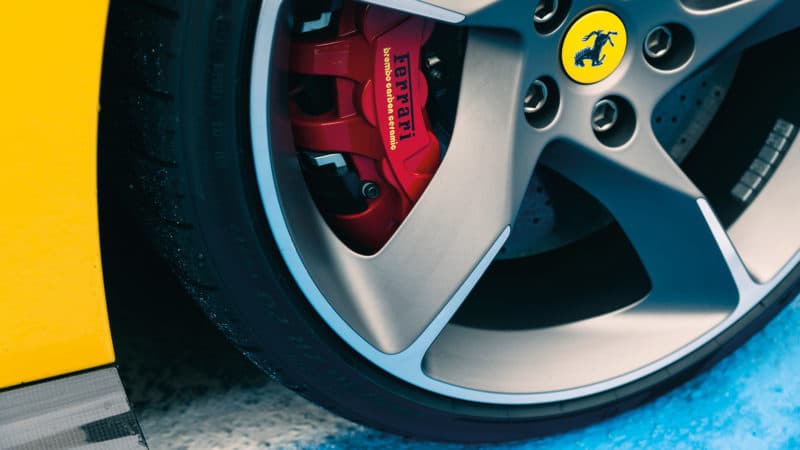
Pirelli P Zero Corsa tyres were developed specially for the SP3
Luc Lacey
The cabin is practical enough for this kind of car, and with a camera in place of a rear-view mirror, visibility is impressive. And it has a roof, windscreen and wipers, which makes it rather more usable than an SP1 or SP2, though storage space is absolutely minimal. For better or worse, this is a toy not a tool.
A front-mounted V12 is probably my favourite configuration, but I won’t deny there’s an additional frisson of excitement hearing one fire up behind you, especially when it’s so damn big. That one Can-Am car aside, this is the largest Ferrari motor of any kind there has been, bigger even than the monster V8 found in the latest Chevrolet Corvette. You look forward to what will clearly be monumental thrust, you know the sound will be echoing round the chambers of your ears long after you’ve gone home but so too is there just a touch of good old-fashioned fear here too. The weather is variable and at some stage I’m going to have to drive it fast in the wet. What’s going to happen when that amount of motor starts to slide sideways?
I should perhaps explain where I am, which is not Daytona, but Le Mans where Ferrari will return next year as a factory team for the first time since 1973 and where the Scuderia has not won since 1964. It is the weekend of the Le Mans Classic and I have never in my life been in a road car that has attracted so much attention, and for almost exclusively the right reasons. Parked outside Ferrari hospitality, you sense they’d start prostrating themselves across its bonnet if there weren’t quite so many officials around. Returning to the circuit some hours later, a bunch of lads literally chased us up the approach road.
Which, of course, is precisely what this car exists to do. It’s not a track-day weapon and as if to reinforce the point Ferrari won’t even proffer a Fiorano lap time, nor is it a car for doing distances because unless you’re alone, you can’t even carry an overnight bag. It’s a car in which to be seen, and if you believe the merit of a car is defined by how well it does the job it was designed to do, then it is one of the best cars in the world. As it should be, given that each will cost its owner a minimum of £1.7m. Some will call that outrageous and point to the entire stable of wonderful cars half that sum might buy, but the fact is all 599 units are already sold, so its customers clearly think it’s worth it, which is all that matters.
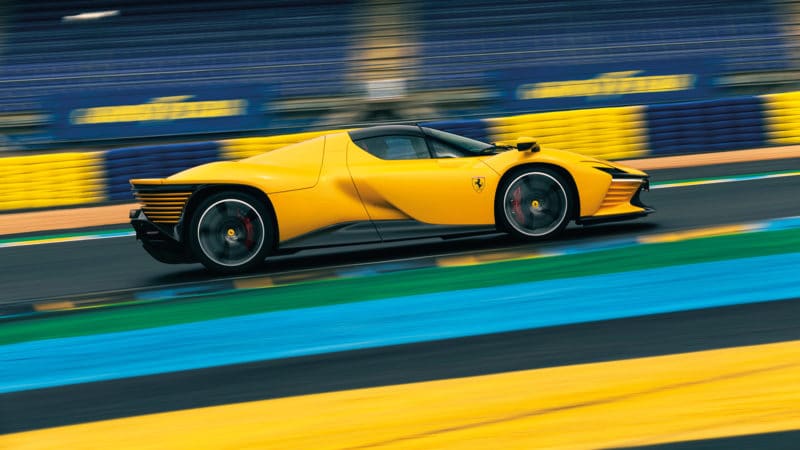
You can trace the stark lines at the rear right from the front bumper. It’s a beautiful piece of design that evokes the Pininfarina-designed P5 prototype of 1968
Luc Lacey
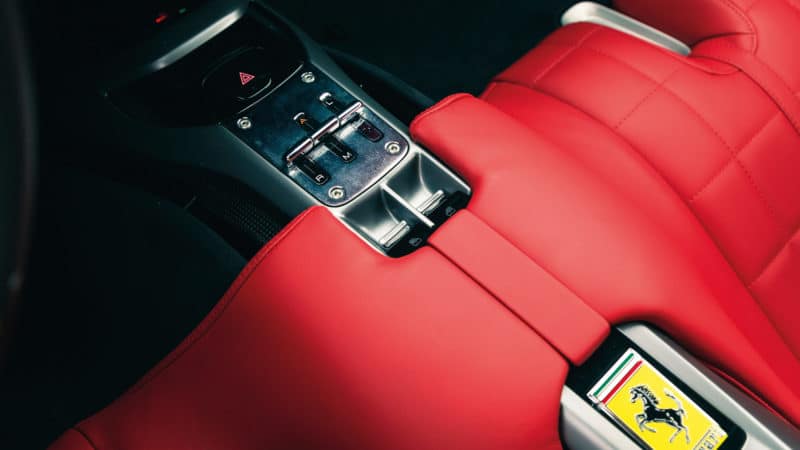
The seats don’t move, but the pedal box does
Luc Lacey
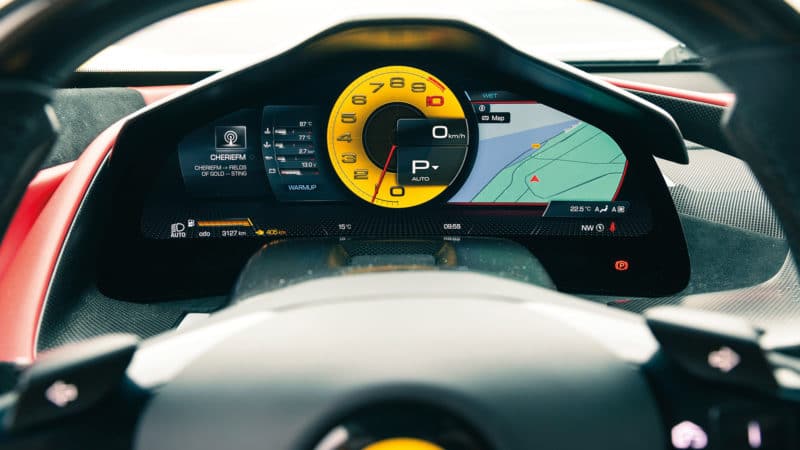
The 10k rev counter isn’t even optimistic…
Luc Lacey
Even though Ferrari provided a yellow car to use on track, we were limited to low speed and static photography as the Classic was in full build at the time. So instead I took a red one and headed away from the noise and traffic, onto the open, deserted roads to the south of the circuit.
It’s not an easy car with which to fall in love. Not at first at least. Its value makes you anxious, its extreme width more nervous still. The steering is old-school Ferrari: light, direct but not overly endowed with feel. Also, in this age of instant gratification it takes a while to dial yourself into an engine that doesn’t make maximum torque until 7250rpm, faster than most motors will even spin. The limiter cuts in just beyond 9500rpm.
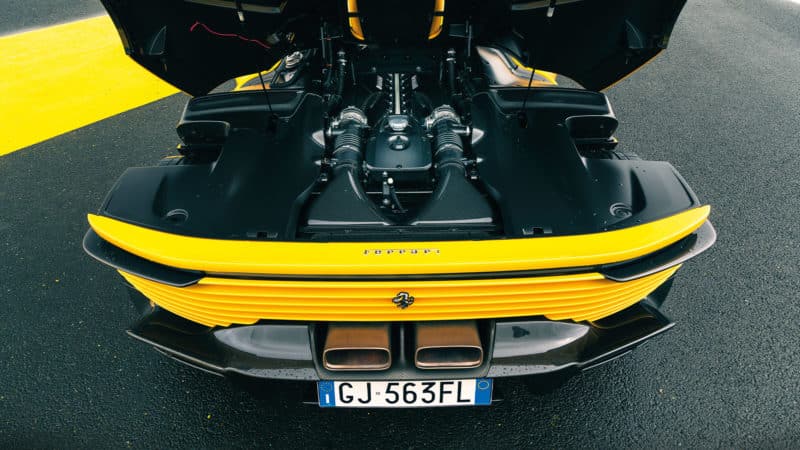
Luc Lacey
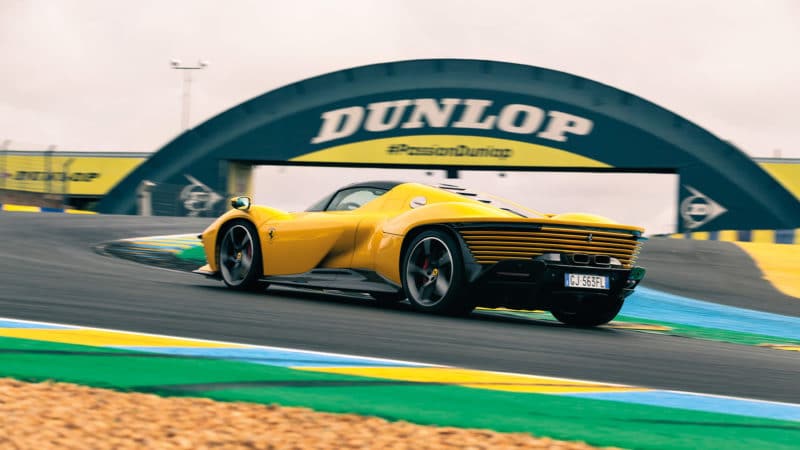
Luc Lacey
It is of course ferociously fast, but probably no more so than a conventional supercar like a McLaren 720S, which also has a carbon tub, far more low-down torque and is £1.5m cheaper… A LaFerrari is almost 10 years old and not only considerably more powerful but, according to Ferrari’s own data, inexplicably lighter too. But to look at the SP3 in such objective terms is to almost wilfully miss its point. What matters is the sense of occasion and how it makes you feel when you drive it fast. The former was always going to be off most scales, the latter took its time to come but was no less real for that when it did. Banging through the gears, listening to that V12’s voice bouncing around the hills, then slowing for villages and catching reflections of yourself in windows, this is where the joy of this car lies. That and the undivided attention of every single person who hears you coming.
The SP3 breaks no new ground, nor was it ever intended to. It has the engine from an 812 Superfast installed in the chassis of a LaFerrari with only a body to truly call its own. But even I, a man who doesn’t really understand people who buy cars more for how they look than drive, has to admit to not minding at all being the centre of attention at Le Mans when aboard something so outstandingly beautiful. And then I went and drove it properly and once I’d adapted to it, I liked it even more. You could argue that cars like the SP3 are not to be taken terribly seriously. But am I glad it exists and even happier to have driven it? With every bone in my body.
Ferrari Daytona SP3 specification
Price £1.7m
Power 829bhp
0-60mph 2.85sec
Engine 6.5-litre V12
Weight 1485kg
Max speed 211mph
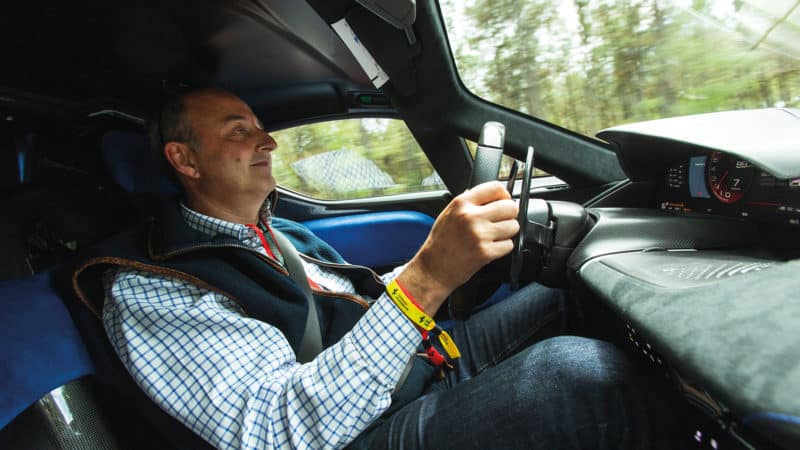
Restricted to low-speed track shots in the yellow car, Frankel handily found a red one to take out on the road. Not like there are many £1.7m hypercars hanging around…
Luc Lacey
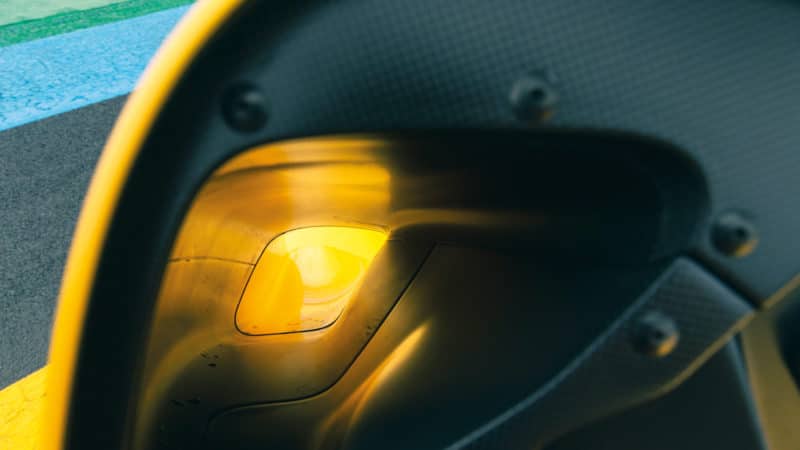
An airbox on the doors channels air to the radiators
Luc Lacey
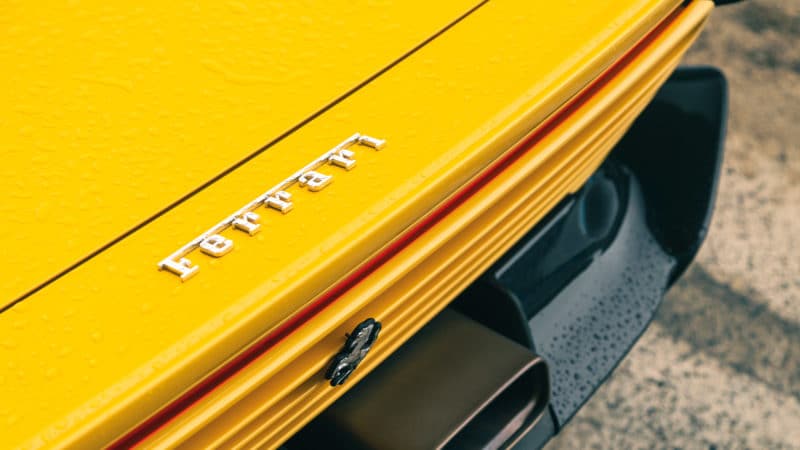
Sharp slats at the rear contrast with fluid lines
Luc Lacey
